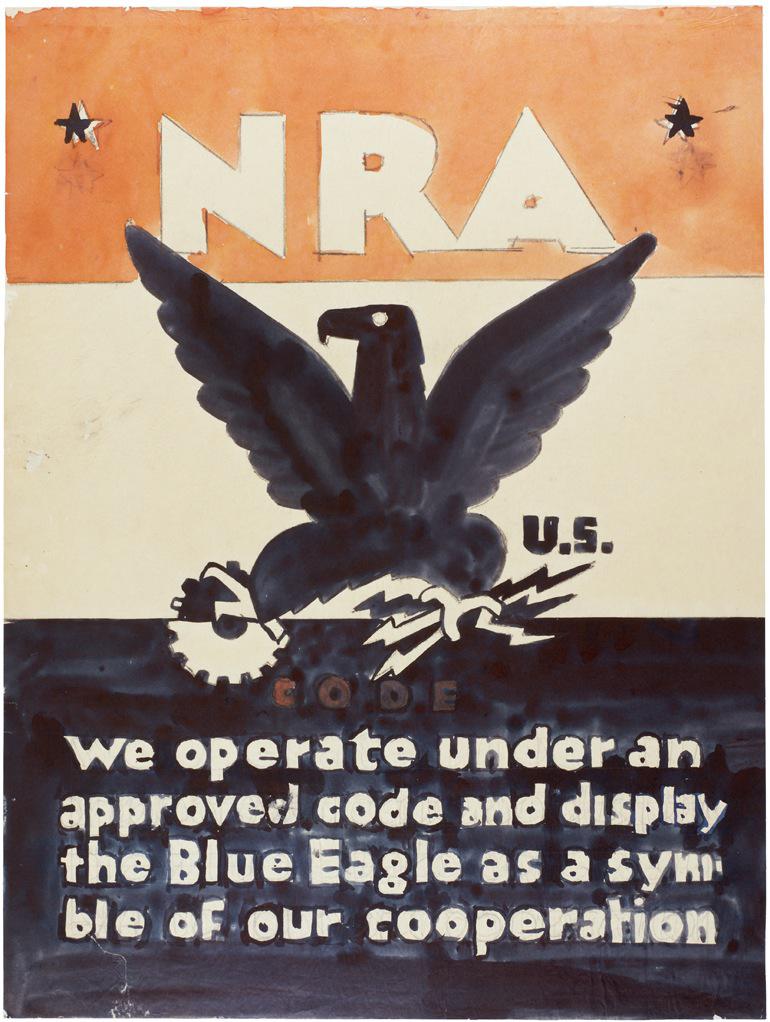The Vault is Slate’s new history blog. Like us on Facebook; follow us on Twitter @slatevault; find us on Tumblr. Find out more about what this space is all about here.
The first time I saw this logo, on the side of a chemistry set produced by a sporting-goods store in the early 1930s, I was deeply confused. It turns out that the people who made that chemistry set were not proudly touting a belief in the Second Amendment. Rather, the logo was meant to signal compliance with the New Deal’s National Recovery Administration.
The National Recovery Administration was established after the passage of FDR’s first big legislative attempt to remedy the economic disaster of the Great Depression. The National Industrial Recovery Act, which went into effect in June 1933, was meant to stabilize industrial production, dictate wages and prices, and enable workers to pursue collective bargaining. It also put power in the hands of trade associations to establish many of these standards, suspending antitrust laws in order to make this possible.
The NRA, created by executive order, coordinated the efforts to implement these new policies. The logo—seen here in mockup form—would be displayed in the windows of businesses and factories in order to promote the ideas behind the NIRA. The eagle clutches a gear in one set of talons and holds lightning bolts in the other, indicating the power of American industry.
Wasn’t the government afraid that people would confuse its new logo with the National Rifle Association’s? Although the NRA that’s now a household name was formed back in 1871, in the 1930s the organization was still a relatively obscure educational body, sponsoring rifle clubs and youth programs. In 1934, the National Rifle Association instituted a legislative affairs division, beginning its transformation into the lobbying superpower that it is today.
The National Recovery Administration was dissolved in 1935 after the Supreme Court found the NIRA unconstitutional. The court said that the executive branch had exceeded its bounds by making new laws and that the laws themselves violated the government’s right to regulate commerce. Before that happened, however, a new NFL franchise in Philadelphia, hoping to grab some of the New Deal’s optimism for its own, adopted the NRA’s symbol as a team name.

Graphic of NRA Blue Eagle, ca. 1933; Records of the National Recovery Administration, 1927-1937. National Archives and Records Administration.